Struggling to bake a low-carb bread that actually tastes good? This coconut flour bread is the game-changer your kitchen has been missing.
Tired of coconut flour bread that turns out dry, crumbly, or worse—tastes like an omelet? You’re not alone. Many low-carb and gluten-free breads disappoint. But this recipe changes that. It’s soft, sliceable, and full of flavor without falling apart or feeling too heavy.
This is the only coconut flour bread recipe you’ll ever need. It comes with everything: a step-by-step video, visual troubleshooting tips, and three flavor variations tested to perfection. Whether you’re keto, paleo, or just cutting carbs, this guide will help you bake a better loaf every single time.
Table of Contents
Why This Recipe Works: The Science of a Perfect Loaf
Coconut flour bread can be tricky if you don’t understand how the ingredients work together. Coconut flour absorbs a lot of liquid, much more than wheat or almond flour. That’s why many recipes turn out dry or crumbly. Getting the balance right is key.
Eggs give the bread its structure and keep it moist. They also help the loaf hold its shape after baking. Psyllium husk works like gluten by binding everything and improving the texture. It creates a soft crumb that holds together when sliced. Apple cider vinegar activates the baking soda, giving your bread a better rise. It also helps cut down on any eggy taste, which is a common complaint.
This mix of ingredients solves the biggest problems people face with coconut flour bread.
⭐️⭐️⭐️⭐️⭐️
“Coconut flour has a low glycemic load, so the digestion of carbs is gradual. It reduces the increase in blood sugar, improving insulin release.” Dr. Sruthi M., MBBS
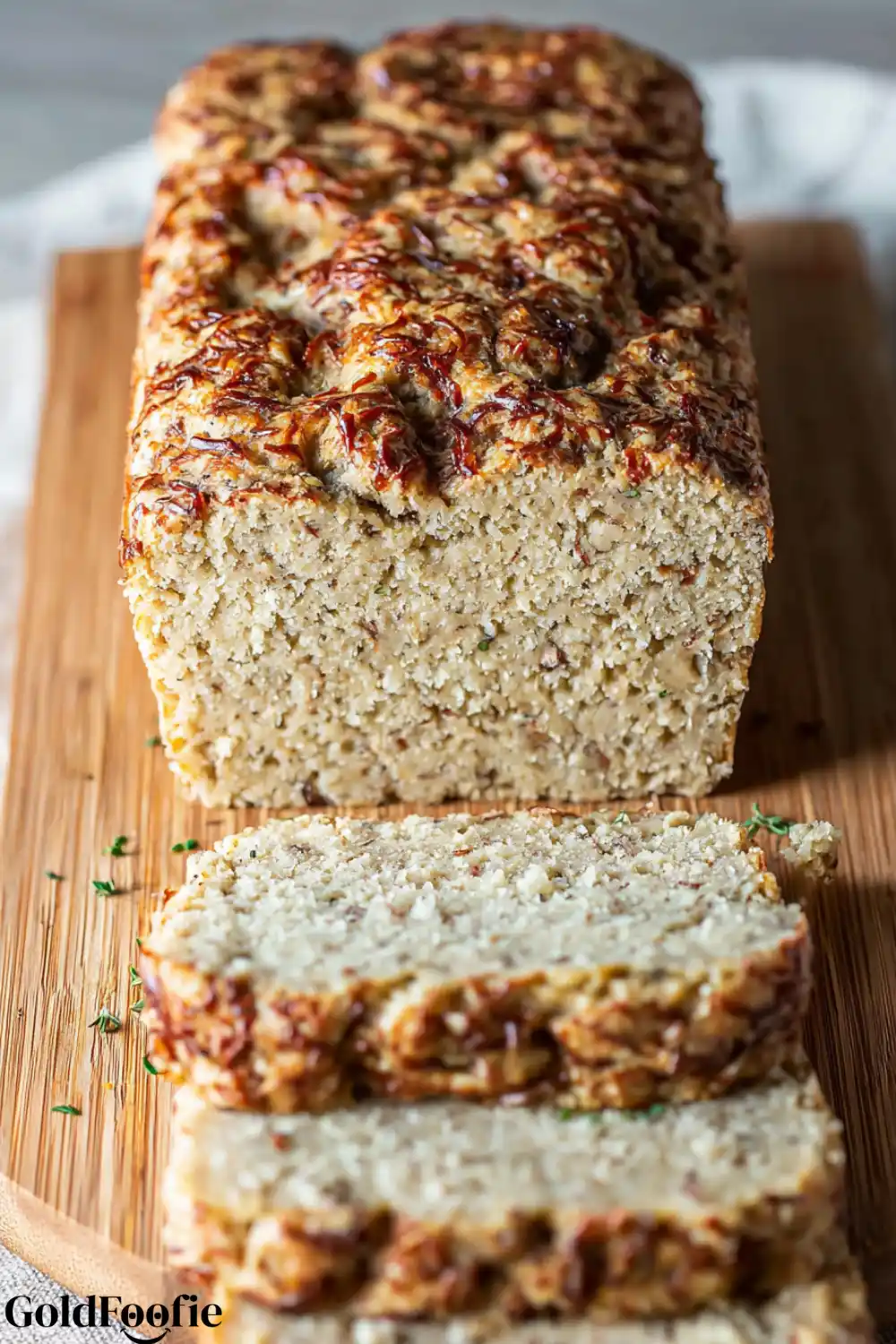
Ingredients Needed for Coconut Flour Bread
To make this coconut flour bread, gather the following ingredients. Each one plays a role in flavor, texture, and structure.
Dry Ingredients:
- ½ cup coconut flour, sifted for best texture
- ⅓ cup ground flaxseed meal, adds fiber and structure
- ¼ cup arrowroot powder or tapioca flour, optional but helps soften the crumb
- 2 teaspoons baking powder, make sure it’s fresh for a good rise
- ½ teaspoon sea salt, enhances the overall flavor
Wet Ingredients:
- 4 large eggs, at room temperature for even mixing
- ½ cup avocado oil or melted refined coconut oil, both are neutral in flavor
- ⅓ cup unsweetened dairy-free milk, such as almond or coconut
- 2 tablespoons honey, for light sweetness and moisture (optional or replaceable for keto)
How to Make Diabetic-Friendly Coconut Flour Bread
Follow these easy steps to make coconut flour bread that turns out moist and flavorful every time.
1. Preheat and prepare the pan
Set your oven to 375°F. Grease an 8×4-inch loaf pan with oil or line it with parchment paper to prevent sticking.
2. Mix the wet ingredients
In a large bowl, whisk the eggs, oil, milk, and honey until smooth. This creates a strong base for your batter.
3. Add the dry ingredients
Combine the coconut flour, ground flax, arrowroot powder, baking powder, and sea salt in a separate bowl. Stir this dry mix into the wet mixture until fully blended. Make sure no dry patches remain.
4. Optional step for a fluffier texture
If you want extra lift, separate the eggs. Beat the whites until stiff peaks form. Mix the yolks in with the wet ingredients as usual. Then gently fold the beaten whites into the batter at the end. This helps make the coconut flour bread lighter.
5. Transfer to the pan and top
Pour the batter into your prepared loaf pan. Smooth the top with a spatula. For added texture, sprinkle sesame seeds and a little flaxseed over the surface.
6. Bake the bread
Place the pan in the oven and bake for 25 to 30 minutes. It’s ready when a toothpick inserted in the center comes out clean.
7. Cool completely
Let the bread cool in the pan for 10 minutes. Then transfer it to a wire rack to finish cooling. This step prevents the bottom from becoming soggy.
8. Store properly
Keep the bread in the refrigerator for up to one week. For the best texture and flavor, lightly toast each slice before eating.
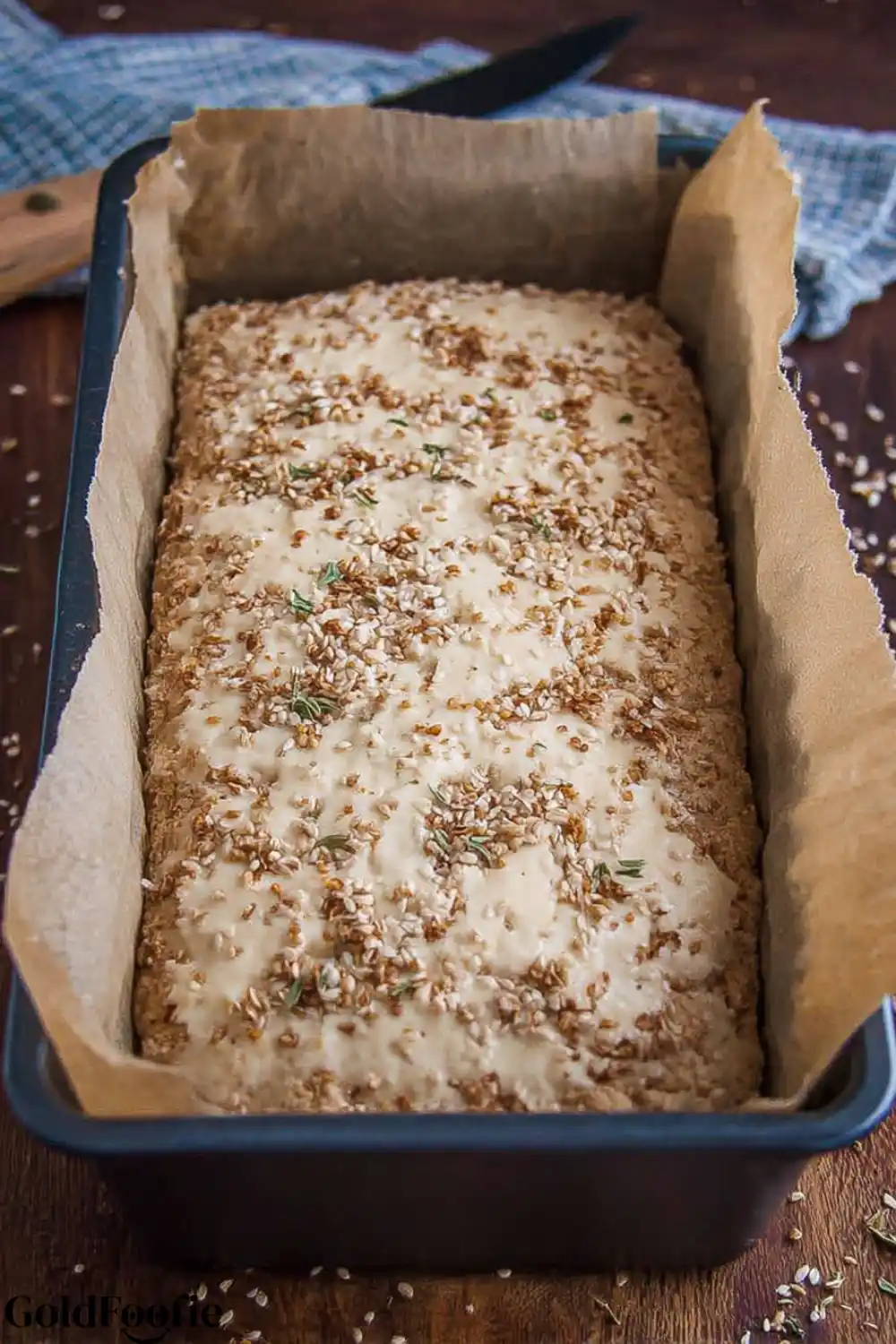
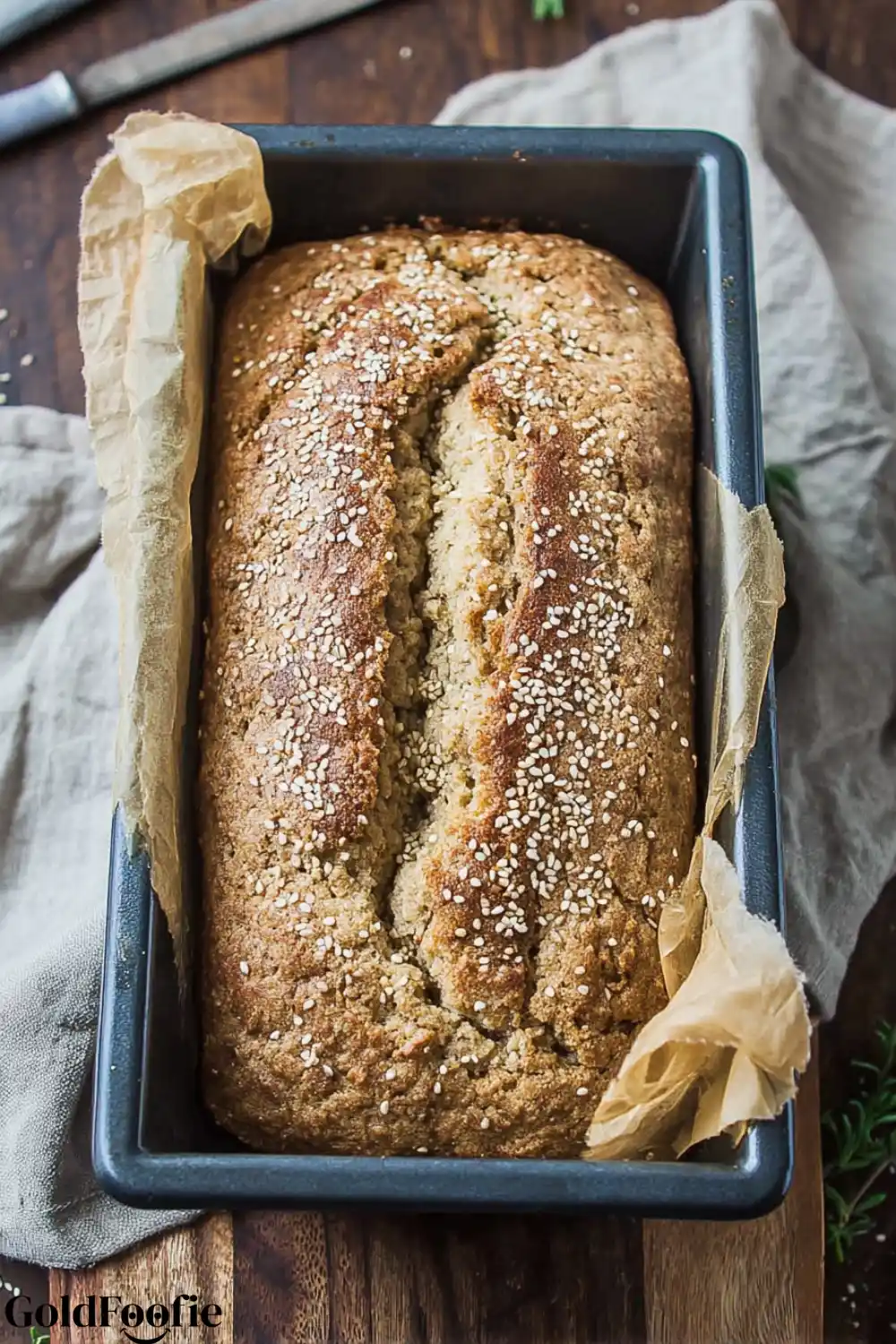
You’ll Also Love
➤ Best Breads for Diabetics
➤ Gluten-Free Diabetic Recipes You’ll Crave Daily
➤ Low-Carb Bread Machine Recipe Solves Every Problem
Nutrition Information (Per Slice of Coconut Flour Bread)
This nutrition breakdown is based on one slice from a 13-slice loaf of coconut flour bread. These values make it a great choice for low-carb and diabetic-friendly diets.
| Nutrient | Amount per Slice |
| Calories | 140 |
| Fat | 12.2 g |
| Cholesterol | 57.2 mg |
| Sodium | 122.2 mg |
| Carbohydrates | 5.6 g |
| Fiber | 2.3 g |
| Sugar | 0.1 g |
| Protein | 3.4 g |
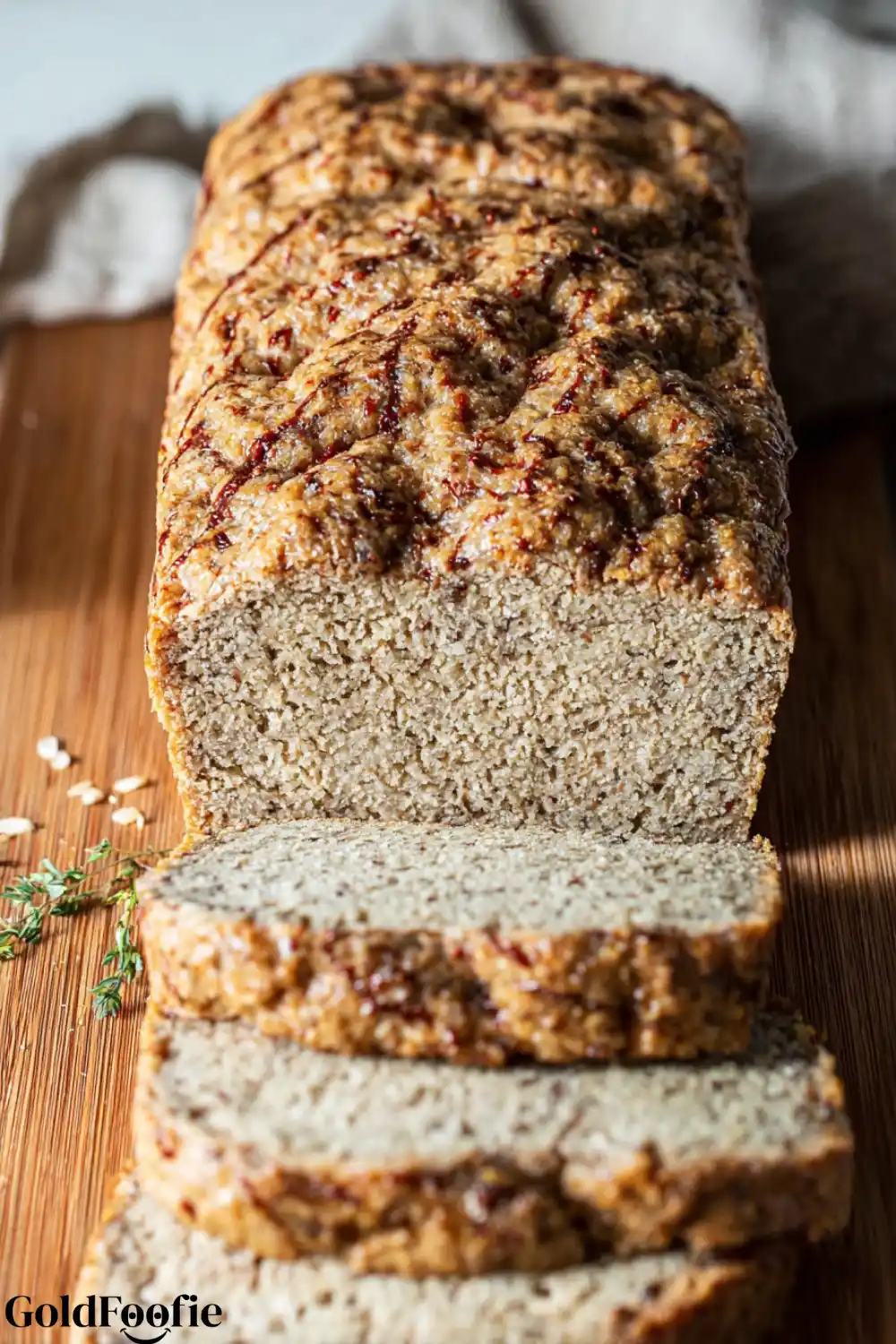
Coconut Flour Bread
Ingredients
Method
- Preheat your oven to 375°F (190°C). Grease an 8×4-inch loaf pan or line it with parchment paper.
- In a large bowl, whisk together eggs, oil, milk, and honey until smooth.
- In a separate bowl, mix coconut flour, ground flax, arrowroot powder, baking powder, and salt. Stir the dry mixture into the wet mixture until fully combined.
- Optional: For a fluffier texture, separate eggs. Whip whites to stiff peaks. Mix yolks with wet ingredients. Gently fold whipped whites into the batter.
- Pour batter into prepared loaf pan and smooth the top. Sprinkle sesame seeds and flaxseed on top if desired.
- Bake for 25–30 minutes, or until a toothpick inserted in the center comes out clean.
- Cool in the pan for 10 minutes, then transfer to a wire rack to cool completely.
- Store in the refrigerator for up to one week. Toast slices before serving for best texture.
Notes
Nutrition Facts (Per Slice)
Calories: 140 kcal : Fat: 12.2 g : Cholesterol: 57.2 mg : Sodium: 122.2 mg : Carbohydrates: 5.6 g : Fiber: 2.3 g : Sugar: 0.1 g : Protein: 3.4 gVisual Troubleshooting Guide for Coconut Flour Bread
Baking with coconut flour can be tricky. If your loaf didn’t turn out as expected, this guide will help you fix common issues.
Problem: My bread is dry and crumbly
Solution: Coconut flour soaks up a lot of liquid. Always measure it carefully using the spoon-and-level method. Never pack it into the cup. Make sure your batter looks thick but slightly pourable before baking. If it’s too thick, add a splash of milk to adjust.
Problem: My bread tastes too eggy
Solution: Use apple cider vinegar to help balance the flavor. Also, let the bread cool fully before slicing. Warm coconut flour bread often tastes more egg-forward, but that fades as it cools.
Problem: My bread is dense and gummy
Solution: Avoid over-mixing the batter. Mix just until everything combines. Also, check your oven temperature and bake until a toothpick comes out clean. Let the loaf cool completely on a wire rack so it sets properly before cutting.
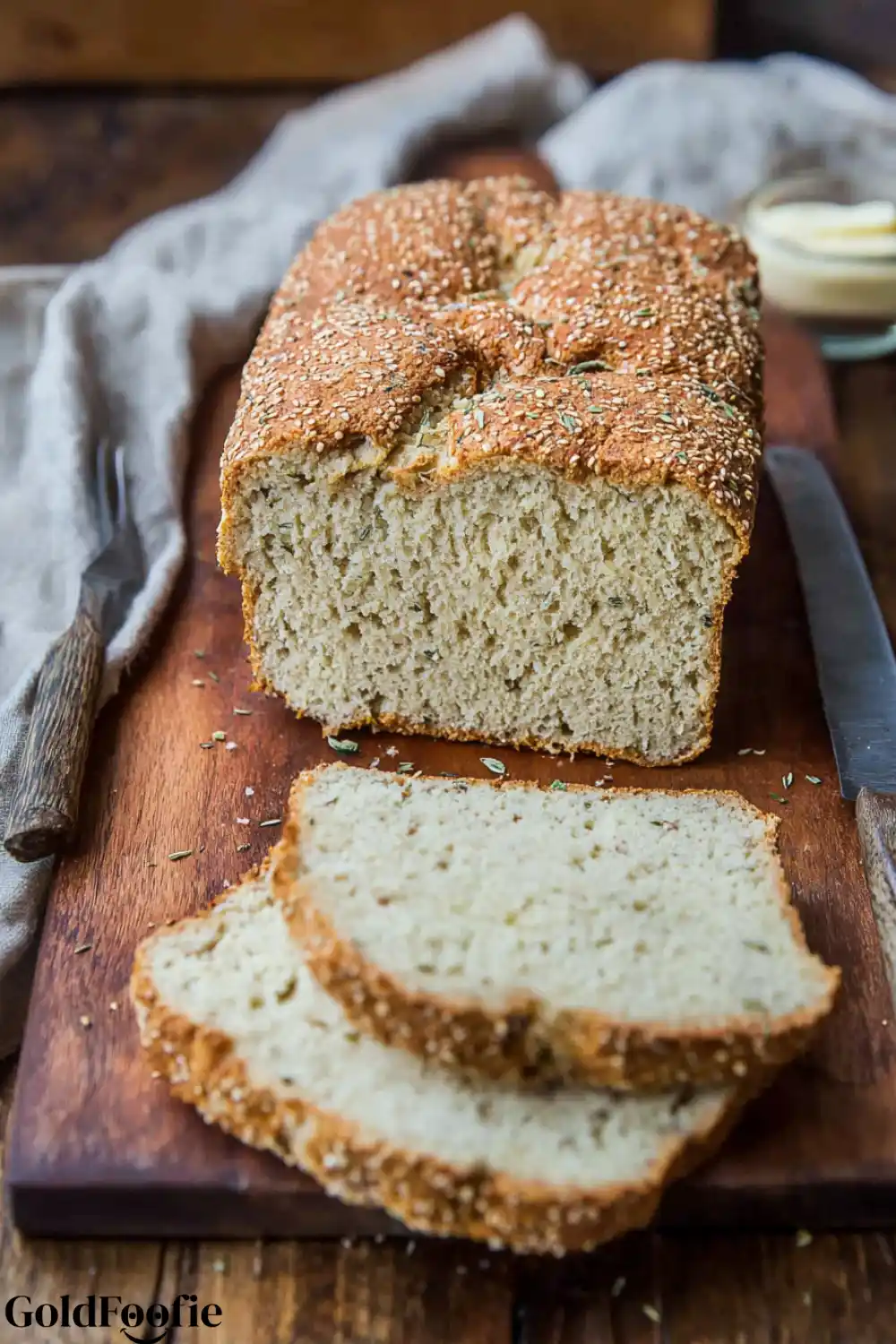
3 Easy Flavor Variations (Tested and Approved)
Try these simple twists to give your coconut flour bread a new flavor while keeping it low carb and satisfying.
Savory Garlic and Rosemary Bread
Add 1 teaspoon garlic powder, 1 teaspoon dried rosemary, and a pinch of black pepper to the batter. This version pairs well with soups or a slice of cheese.
Sweet Cinnamon Bread
Stir in 1 teaspoon cinnamon and 2 tablespoons of a keto sweetener like monk fruit or erythritol. Serve toasted with butter for a comforting snack.
Cheesy Jalapeño Bread
Mix in ½ cup shredded cheddar cheese and 1 small jalapeño, finely diced. This bold version is perfect for breakfast or a savory snack.
How to Store, Freeze, and Toast Your Coconut Flour Bread
Storage:
Keep your coconut flour bread in an airtight container in the refrigerator. It will stay fresh for up to one week. Make sure the loaf is fully cooled before storing to avoid condensation.
Freezing:
To freeze, slice the bread first. Place parchment paper between slices and store them in a freezer-safe bag. This way, you can pull out individual slices as needed without thawing the whole loaf.
Toasting:
Yes, you can toast coconut flour bread. Use a toaster or toaster oven on a medium setting. Keep an eye on it since it toasts faster than regular bread. Light toasting brings out the flavor and improves the texture.
Coconut Flour Bread vs. Almond Flour Bread
Both coconut flour bread and almond flour bread are popular in low-carb and gluten-free diets. Each one has its own texture and taste.
Coconut flour bread tends to be denser and more spongy. It absorbs a lot of moisture, which is why recipes need more eggs and liquid. The flavor is mild with a slight coconut note.
Almond flour bread usually has a softer, cake-like texture. It is a bit higher in calories and fat but lower in absorbency. That means you can use less liquid in the recipe.
Coconut flour bread is often more affordable and lower in carbs per serving. It also works well for those avoiding nuts.
Helpful Notes
- To make this coconut flour bread fully keto, replace the honey with sugar-free monk fruit syrup.
- If you do not have arrowroot or tapioca flour, you can leave it out or replace it with almond flour for a slightly different texture.
- For a paleo-friendly baking powder, use a mix of two parts cream of tartar to one part baking soda.
- Always use room temperature eggs for better mixing and a more even bake.
Let the bread cool completely before slicing to prevent crumbling.
Frequently Asked Questions (FAQ)
Can you use coconut flour for bread?
Yes, you can. Coconut flour is a great option for low-carb, gluten-free, and diabetic-friendly baking. It requires more eggs and liquid because it absorbs a lot of moisture.
Is there a downside to coconut flour?
The biggest challenge is its absorbency. If not measured correctly or combined with enough liquid, it can make the bread dry or crumbly. With the right recipe, this is easy to avoid.
Will yeast work with coconut flour?
Coconut flour does not work well with yeast alone. It lacks gluten, which yeast needs for structure. That’s why this coconut flour bread uses baking powder for lift instead.
Can coconut flour be substituted for bread flour?
Not directly. Coconut flour is much more absorbent than bread flour. You need different ratios and more eggs. Always use a recipe designed for coconut flour to get the right texture.
Final Thoughts
This coconut flour bread recipe solves the most common problems. It is moist, not eggy, and holds together beautifully. Whether you’re following a keto, paleo, or gluten-free lifestyle, this bread fits perfectly into your plan.
If you tried this recipe, leave a comment with your results or questions. I read every one and reply with tips if needed.
Share a photo of your coconut flour bread on social media and tag GoldFoodie. I would love to see your creations.
Diabetes Nutrition Specialist | Healthy Diet Advocate | Founder of GoldFoodie.
My passion for nutrition began with a deeply personal journey supporting my father through his battle with diabetes. Watching his daily struggles made me realize how powerful the right food choices can be in improving quality of life. That experience drove me to dedicate my career to helping others live healthier, more balanced lives.






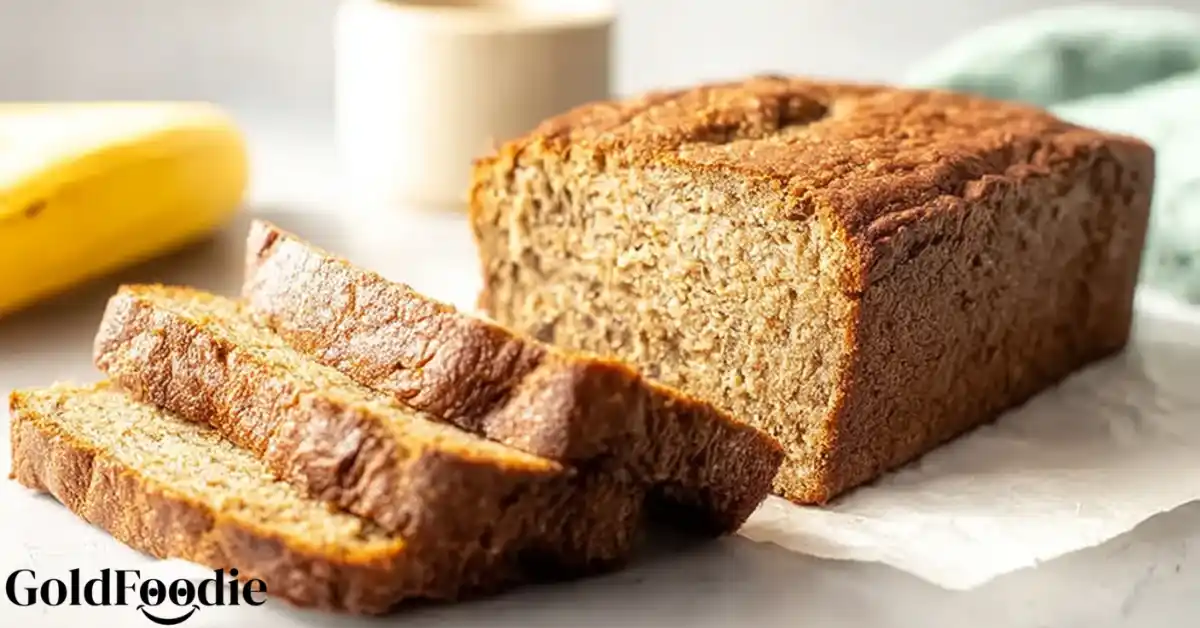
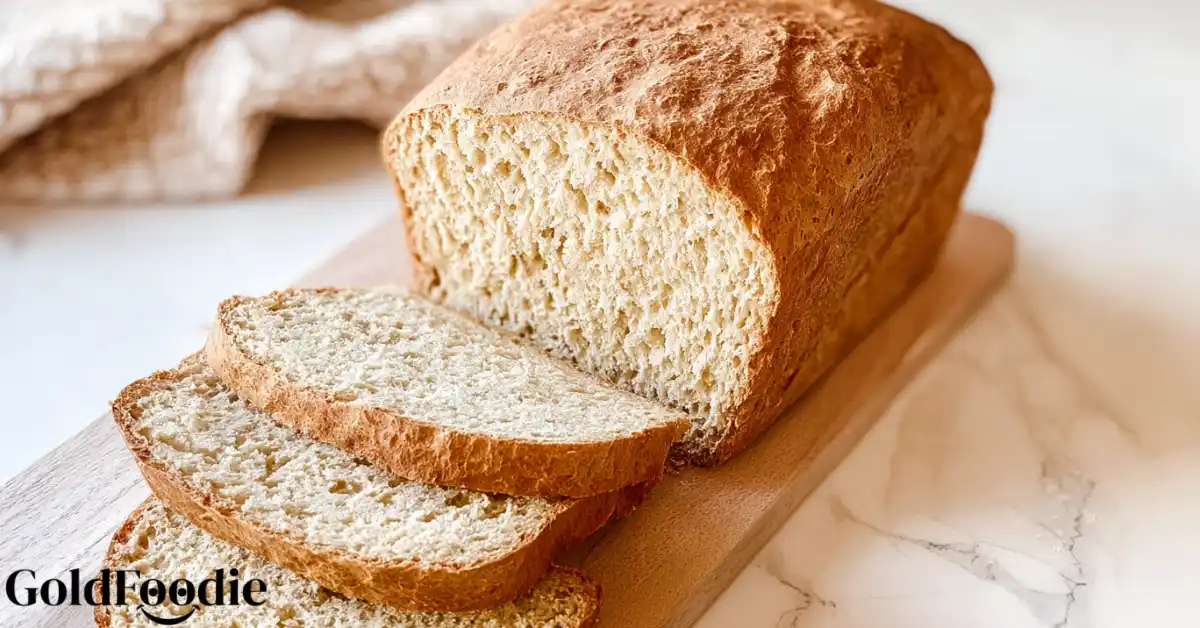
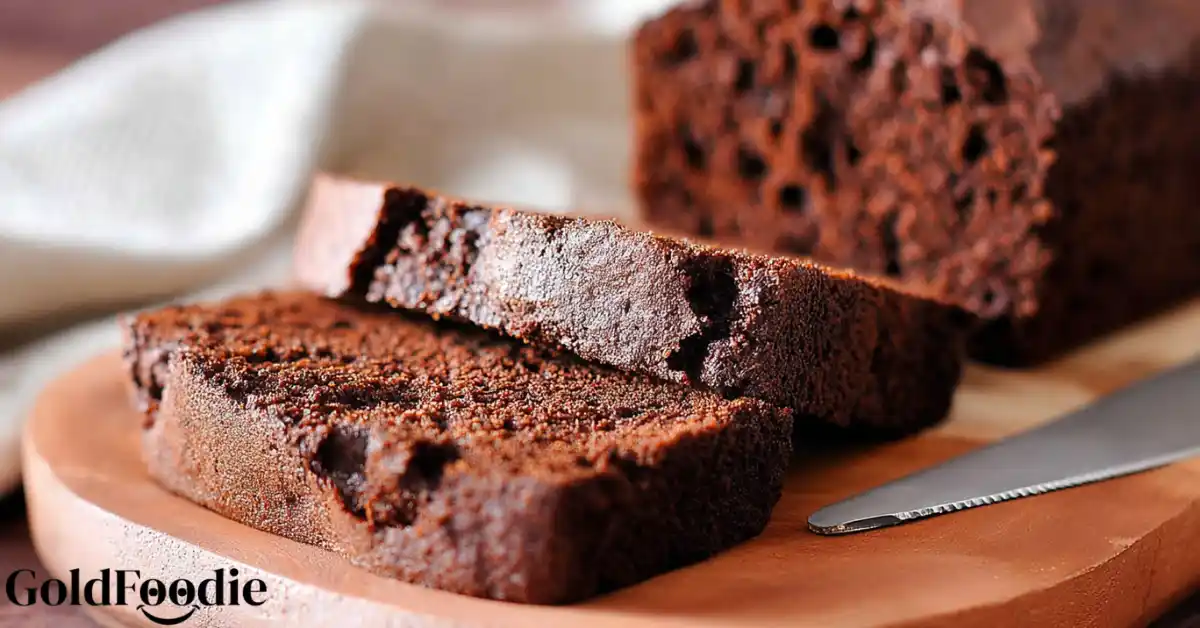
1 thought on “Coconut Flour Bread Recipe Moist and Fluffy Guide”